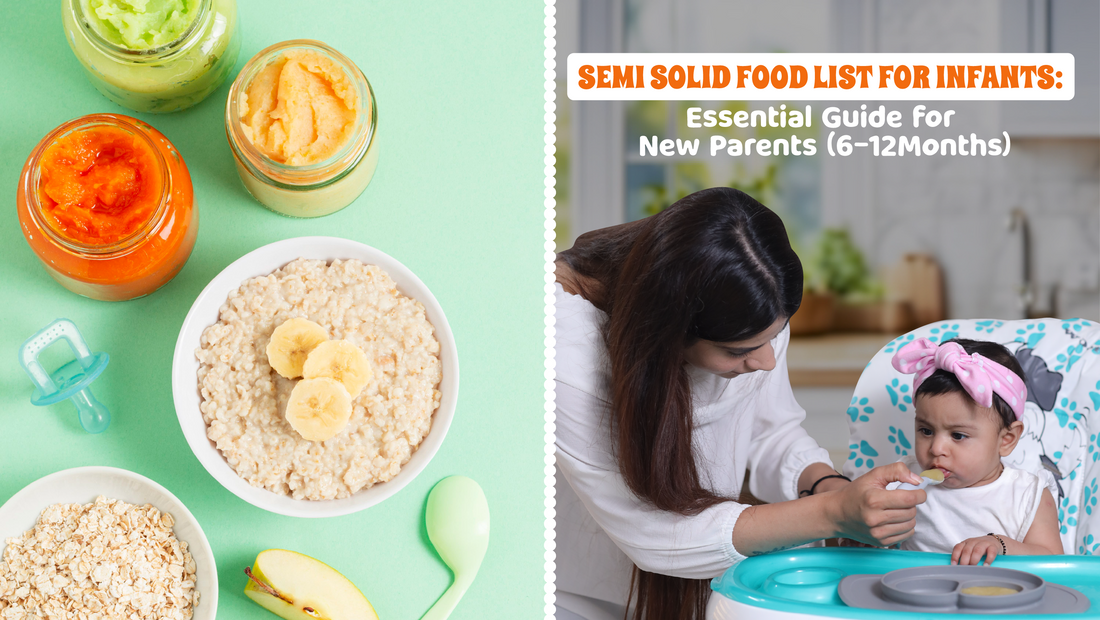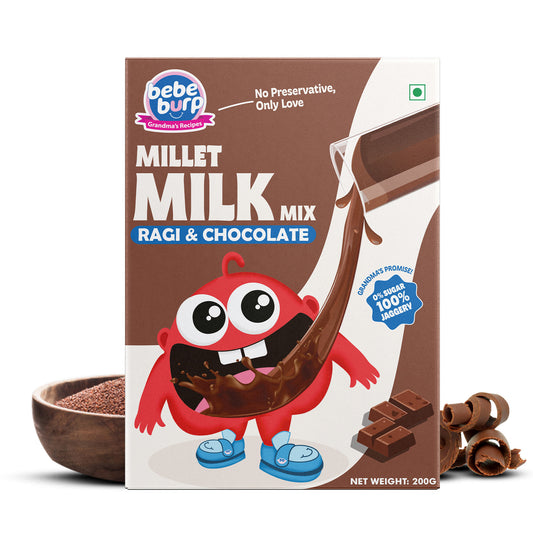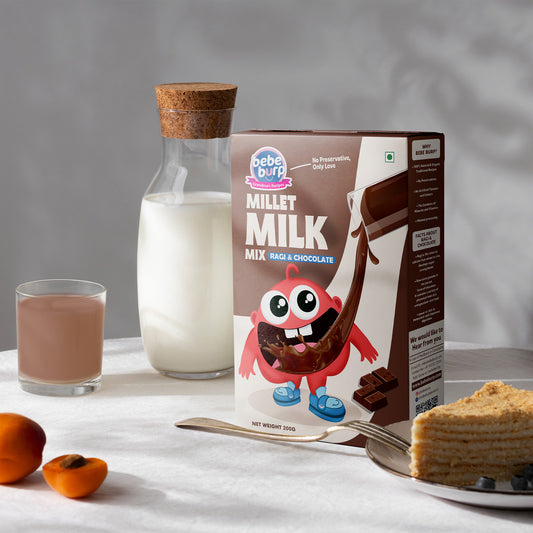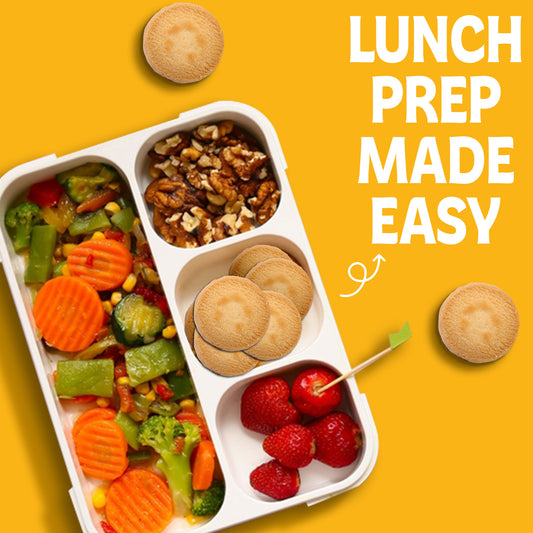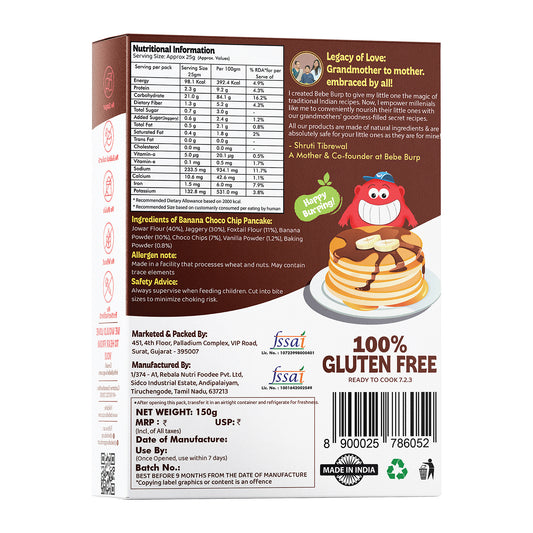There comes a time when you will grow, and with your baby, one of the most exciting things is that semi solid foods become the norm. This is one of the key developmental changes your body learns to transition from breastmilk and formula to solid foods. This shift is intense but can be viewed as an opportunity to open your child up to various tastes, textures, and nutrition.
Here, we will give a detailed and extensive explanation, assisting you in weaning your infant through semi-solid foods. When to introduce yourself and what else to include, except there, you will get information on all the subjects necessary to make this process smooth and pleasant for yourself and your baby, too!
Knowing when to start feeding your baby semi-solid foods can be tricky. However, a few clear signs indicate your baby is ready for solids. According to the American Academy of Pediatrics, around six months is the right time to introduce solid food. However, every child is different, and one should look for certain developmental milestones to guarantee they are ready.
Signs that your baby is ready for semi solid foods include:
Reasonable neck control: Your baby should be able to sit upright with support and steady their head.
Interest in food: They may watch you eat with curiosity or show interest in your food.
Loss of the tongue-thrust reflex: This reflex causes babies to push food out of their mouth, which typically disappears around 4-6 months.
Increased appetite: If your baby seems unsatisfied after breastfeeding or drinking the formula, it's the best time to start solids.
As always, checking with your pediatrician before feeding anything solid to your little one is essential, as they can give parenting-specific advice based on your child's growth and development.
Benefits of Semi-solids for Infants
The benefits of introducing semi-solid to your baby are vast and vary beyond just their nutrition; it potentially affects more elements of their development. Some significant advantages are:
- Nutritional Benefits: Semi-solid foods contain all essential vitamins, minerals, and micro-nutrients essential for your growing baby. Fruits, vegetables, and grains provide an excellent source of vitamins (A, C, and folate) plus iron and calcium
- Development of Oral Motor Skills for Chewing & Swallowing: On consuming semi-soft foods, they will bring their oral motor skills for chewing and swallowing. This is a crucial developmental step and prepares them for a more diverse diet later on.
- Promotes an Appropriate Weight Gain: Weaning alone does not supply the necessary nutrients for full growth and weight gain by a few months after introducing breastmilk and formula. Semi-solid foods contain the right calories, fats, and proteins your baby needs for growth and cognitive development.
First Semi-Solid Foods for Infants
Choosing the first semi-solid food for babies is best to be simple. You can start with pureed, which contains no more than two ingredients to provide easy digestion and isn't likely to cause allergies. Here are some ideal first foods for your infant:
Pureed Fruits Purees can also be made out of fruit as babies enjoy sweet fruit. These do not present a choking hazard as they are soft.
A few examples include:
- Bananas: These can be mashed or pureed with a fork, allowing soft bananas to be added when feeding.
- Apples: Steamed or baked falls can be pureed to a smoothie. Apples are high in fiber and vitamin C.
- Pears: Another good option for your baby's first food, like apples, is that it is very soft and easily digested.
Mashed Vegetables
Please let me tell you that the baby needs lots of vegetables as well, which is a part of the basic diet for the baby and fulfills the essential vitamins and minerals. Great alternatives include:
- Sweet Potato: Excellent Source of beta-carotene (meaning it will convert to vitamin A) and packed full of nutrients when mashed or pureed.
- Steamed carrot: Mash or puree the carrots-you can give them in this texture to your kid.
- Pumpkin: Pumpkin is high in fiber, vitamin A, and antioxidants, so it is an excellent vegetable for your weanling's first foods.
Or Rice Cereal/but any plain Oatmeal
A typical first food on the basic schedule is rice cereal because it is hypoallergenic and easy to digest with added iron. Mix it with breast milk/formula to make it a thin slurry. Oatmeal is also the way to go for fiber and iron.
Soft and smooth porridge or Kheer
In many cultures, rice porridge, milk mix, or Kheer (a milk dessert) is often one of the first foods for babies. You can make a simple, smooth porridge or milkshake using rice, water, and a little oil or plain cream.
Introduce new foods slowly
When your baby is on semi-solids, you can add more variety in foods and textures from here. Here are a few things to make this transition smooth:
- Switch from pureed-to-pureed foods: Once your baby is used to smooth purees, start introducing finer pureed foods, such as mashed potatoes, avocado, or peas.
- Snacks: As your child's eye-hand coordination improves, you can introduce small snacks and soft foods like soft fruits or whole grains.
- Introduce new sweets slowly: Wait three days after introducing each new food to check for allergies. This will also help your baby get used to new tastes and textures.
- Diversification: the more kinds of variety you add, the better for your baby's healthy eating habits. Giving fruits, vegetables, grains, and proteins will make your baby a little flavor text lover.
First-Year Foods to Avoid
There are only a handful of foods that you want to avoid giving your baby in her first year to help prevent choking, as well as allergies and other health risks
Honey: Botulism spores hide in honey, a serious threat for babies under a year old.
Whole Nuts or Popcorn: Whole nuts and pieces of popcorn can become choking hazards; keep these away from your baby.
Overly salty/sugary food: Babies' kidneys are still maturing, so they do not feed salted foods to youngsters. Instead, DO NOT eat salty foods such as chips or other junk, candy, or sweets to minimize advancing tooth rot and lousy eating habits.
Cold or Uncooked Food: Raw vegetables, meats, or eggs should be excluded as they may be harmful— cause food-borne diseases.
Homemade Semi Solid Foods: 10 Tips to Create Homemade Puddings, Pies, and Puddings from Scratch
A lot of parents instead make homemade baby food as they want to be sure of feeding their children pure, nutritious products. Here are some suggestions for making homemade baby food:
- Ingredients Daughter: Use fresh, organic fruits and vegetables whenever feasible. This ensures your baby has the proper nutrition without extra preservatives or chemicals.
- Bake / Cook and Puree: Other good ways of preparing baby food are steaming, boiling, and baking. They retain more nutrients, so steam instead of boiling with the vegetables and fruits.
- Prepare baby food: Store homemade baby food in ice cube trays or clear containers of individual portion sizes and store it in the refrigerator for 1-2 days. To save for later, freeze the food in portions and thaw as required.
FAQS:
Q1: My baby will not touch the semi-solid food!!
Ans: Babies are often picky about new things, so that's okay. If your child decides to pick and refuse certain foods — introduce them again to them a few days later. Tell and show everything you want, as well as different options of foods, and be consistent. The patient's baby usually must be exposed to new tastes often.
Q2: How to determine a food allergy?
Ans: Introduce a new food try at a time and monitor for signs of allergies (rash or hives and swelling/laryngospasm/shortness of breath). If you see any of these symptoms, stop feeding the food and take your child to a pediatrician.
Q2: Weaning breast milk or let down with semi-solids (safe transition).
Ans: For the first few months, when you introduce solids, think of breast milk or formula as your baby's primary source of nourishment. Semi-Solid Foods — semi-solid foods supplement breast milk or formula until your baby is around one year old.
Introducing semi-solid foods to your baby is an enjoyable and critical phase of development. If you introduce your baby to the simplest, most nutritious options and introduce their palate slowly, you can help your child form good eating habits that will stay with them for life.

